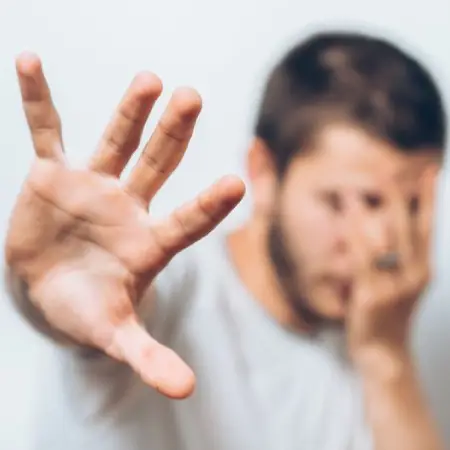PHOBIC ANXIETY DISORDER
Phobic Anxiety Disorder
Phobic Anxiety Disorder, also known as specific phobia, is characterized by an intense and irrational fear of a specific object or situation. People with this disorder often go to great lengths to avoid the feared object or situation, which can significantly interfere with their daily life and functioning. Common phobias include fear of heights, spiders, flying, and enclosed spaces. Treatment typically involves therapy, such as cognitive-behavioral therapy (CBT), and sometimes medication to help manage symptoms and gradually confront the feared objects or situations.
Who is at risk of developing Phobic Anxiety Disorder?
Phobic Anxiety Disorder can affect anyone, regardless of age, gender, or background. However, some individuals may be more predisposed to developing phobias due to genetic factors, environmental influences, or past experiences. Additionally, individuals with certain personality traits, such as high levels of neuroticism or anxiety sensitivity, may be more susceptible to developing phobias.
What are the causes and symptoms of Phobic Anxiety Disorder?
Causes of Phobic Anxiety Disorder:
- Genetic predisposition: There may be a genetic component that makes some individuals more prone to developing phobias.
- Traumatic experiences: Past traumatic events associated with specific objects or situations can trigger phobic reactions.
- Learned behavior: Observing others’ fearful reactions or being taught to fear certain things can contribute to the development of phobias.
- Brain chemistry: Imbalances in neurotransmitters, such as serotonin, may play a role in the onset of phobic anxiety disorders.
Symptoms of Phobic Anxiety Disorder:
- Intense fear or anxiety: Individuals with phobic anxiety disorders experience overwhelming fear or anxiety when confronted with the phobic object or situation.
- Avoidance behavior: They may go to great lengths to avoid the object or situation that triggers their fear.
- Physical symptoms: Symptoms such as sweating, trembling, rapid heartbeat, dizziness, and shortness of breath may occur in response to the phobic stimulus.
- Irrational fear: The fear is disproportionate to the actual threat posed by the object or situation.
Interference with daily life: Phobias can significantly disrupt normal functioning and relationships if left untreated.
What are the treatment options for Phobic Anxiety Disorder?
Cognitive-behavioral therapy (CBT): This type of therapy helps individuals identify and challenge irrational thoughts and beliefs about their phobic triggers.
Exposure therapy, a subset of CBT, involves gradually exposing individuals to their feared objects or situations in a controlled environment to reduce anxiety.
Systematic desensitization: This therapy gradually exposes individuals to their feared objects or situations while teaching relaxation techniques to manage anxiety.
Virtual reality exposure therapy (VRET): VRET involves using virtual reality technology to simulate phobic situations in a controlled environment, allowing individuals to confront and gradually overcome their fears.
Mindfulness-based therapy: This approach focuses on developing mindfulness skills to help individuals become more aware of their thoughts and emotions without judgment, which can reduce anxiety related to phobias.
Group therapy: Participating in therapy groups with others who have similar phobias can provide support, encouragement, and opportunities for learning coping strategies.
Consult today with Dr. Nishtha Dalwani, a distinguished Psychiatrist and Psychotherapist, for expert guidance and compassionate care towards mental well-being, especially in treating phobias.

